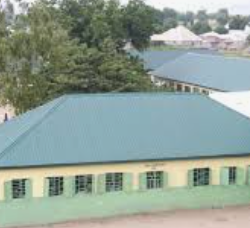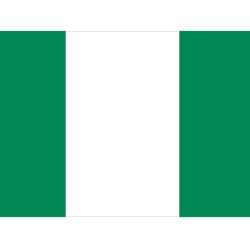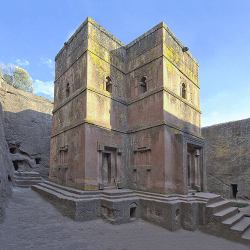While land area often reflects a country’s physical scope and influence, many of the world’s smallest nations pack significant historical, cultural, and economic impact despite their small size. This article takes an in-depth look at the ten smallest countries by land area, highlighting what makes each unique and influential on the global stage.
1. Vatican City – 0.17 square miles (44 hectares)
Vatican City, the world’s smallest independent state, covers only 0.17 square miles within Rome, Italy. As the spiritual and administrative headquarters of the Roman Catholic Church, it is home to significant religious landmarks, including St. Peter’s Basilica and the Sistine Chapel. With its own government, postal system, and even a media outlet, Vatican City wields a global influence that far exceeds its tiny area.


Key Features:
- Population: About 800 residents, including the Pope.
- Unique Aspects: Vatican City has its own postal system and economy, largely supported by donations, museum admissions, and stamp sales.
2. Monaco – 0.78 square miles (2 square kilometers)
Nestled along the French Riviera, Monaco spans only 0.78 square miles. Known for its luxury, casinos, and as a tax haven, Monaco has one of the highest population densities in the world. This microstate attracts high-net-worth individuals and is famous for hosting the Monaco Grand Prix.
Key Features:
- Population: About 39,000.
- Unique Aspects: The Monte Carlo Casino and its high GDP per capita, supported by tourism, banking, and real estate.
3. Nauru – 8.1 square miles (21 square kilometers)
Located in the Pacific Ocean, Nauru covers 8.1 square miles. With no official capital, this small island nation is known for its phosphate deposits, which once made it one of the wealthiest countries per capita. However, environmental degradation from phosphate mining has left lasting impacts.
Key Features:
- Population: Approximately 10,000.
- Unique Aspects: Phosphate mining was the backbone of Nauru’s economy, but today, Nauru faces environmental challenges and a high dependency on imported goods.
4. Tuvalu – 10 square miles (26 square kilometers)
Tuvalu, an island nation in the Pacific, spans only 10 square miles across nine islands. Rising sea levels are a significant concern for Tuvalu, as many of its islands are just a few meters above sea level. The country’s economy relies on fishing, remittances, and the leasing of its “.tv” internet domain.
Key Features:
- Population: Around 11,500.
- Unique Aspects: Vulnerable to climate change and dependent on international support, Tuvalu has raised awareness of global warming’s impact on small island nations.
5. San Marino – 24 square miles (61 square kilometers)
San Marino, a landlocked enclave within Italy, is one of the world’s oldest republics, covering 24 square miles. Known for its medieval architecture and history, San Marino is a popular tourist destination. Its economy is supported by banking, tourism, and ceramics.
Key Features:
- Population: Approximately 34,000.
- Unique Aspects: The country has a high GDP per capita, thanks to a strong financial sector and tourism.
6. Liechtenstein – 62 square miles (160 square kilometers)
Nestled between Switzerland and Austria, Liechtenstein covers 62 square miles. This prosperous country boasts a high GDP per capita and a strong financial sector. With beautiful Alpine landscapes, it is also known for its outdoor recreation, including skiing and hiking.
Key Features:
- Population: Around 39,000.
- Unique Aspects: Liechtenstein has a low tax rate and is a global financial hub, attracting businesses and high-net-worth individuals.
7. Marshall Islands – 70 square miles (181 square kilometers)
The Marshall Islands, a Pacific island nation, comprises 70 square miles spread across 29 coral atolls. Known for its historical significance during World War II and subsequent nuclear testing by the United States, the country faces environmental challenges due to rising sea levels.
Key Features:
- Population: Approximately 59,000.
- Unique Aspects: The U.S. dollar is the official currency, and the country relies heavily on financial assistance from the United States.
8. Saint Kitts and Nevis – 101 square miles (261 square kilometers)
Saint Kitts and Nevis, a Caribbean nation, covers 101 square miles. Known for its lush scenery, tropical climate, and luxury tourism, the country’s economy depends heavily on tourism, agriculture, and its Citizenship by Investment program, which allows foreign nationals to obtain citizenship through investment.
Key Features:
- Population: Around 53,000.
- Unique Aspects: One of the few countries offering Citizenship by Investment, which has boosted its economy and international ties.
9. Maldives – 115 square miles (298 square kilometers)
The Maldives, an island nation in the Indian Ocean, spans 115 square miles across 26 atolls. Known for its stunning beaches, coral reefs, and luxury resorts, the Maldives faces significant threats from rising sea levels. Tourism is the mainstay of the Maldivian economy, contributing more than 28% to its GDP.
Key Features:
- Population: Approximately 540,000.
- Unique Aspects: With an average ground level of only about 1.5 meters above sea level, the Maldives is one of the most vulnerable countries to climate change.
10. Malta – 122 square miles (316 square kilometers)
Located in the Mediterranean Sea, Malta covers 122 square miles and is known for its rich history, culture, and strategic location. Malta’s economy is supported by tourism, film production, and financial services. The country is also famous for its prehistoric temples and vibrant arts scene.
Key Features:
- Population: Around 516,000.
- Unique Aspects: Malta has a high population density, and its location has historically made it a strategic naval base.
The Importance of Small Land Area for These Nations
High Population Density and Urban Planning
In countries like Monaco and Malta, small land areas mean that high population density and urban planning are essential to maximize space and maintain quality of life. Dense urban development in these small countries requires advanced infrastructure to prevent overcrowding.
Unique Economic Opportunities
Many small countries leverage their size to create unique economic opportunities. Monaco, for example, is a tax haven attracting wealthy residents, while Tuvalu generates revenue by leasing its “.tv” internet domain. The Maldives and Malta rely heavily on tourism, promoting their cultural heritage and natural beauty.
Environmental Vulnerability
Several small island nations, such as the Maldives and Tuvalu, are highly vulnerable to rising sea levels due to climate change. This environmental threat has prompted international initiatives and partnerships to support these nations’ adaptation efforts and address global warming’s effects.
Geopolitical Influence and Identity
Despite their small size, these countries have a unique geopolitical identity. Vatican City, for instance, holds significant influence in global religious affairs, while countries like San Marino and Liechtenstein represent some of the oldest and most stable political systems.
These ten smallest countries show that land area doesn’t necessarily dictate a country’s impact or significance. They showcase unique economies, strong cultural identities, and resilience in facing both opportunities and challenges. Each has carved out a distinct role on the world stage despite its limited size, proving that small can indeed be powerful.









